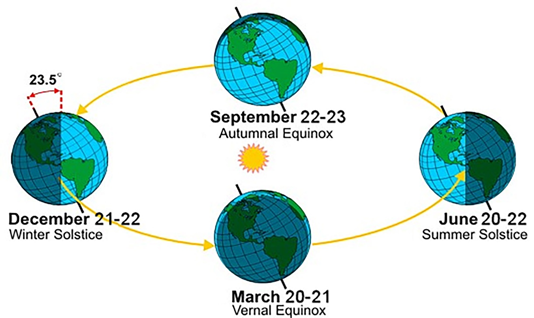

22nd June 2022 (6 Topics)
Context
The Earth observes its Summer solstice on June 21 in the Northern Hemisphere.
- June 21 is the day of the summer solstice in the northern hemisphere in year 2022.
- Solstices happen twice per year: one for the winter and one for the summer.
- It is the longest day of the year, happens on the day of the summer solstice since the earth receives the longest period of daylight during the day.
- On 21st June, the northern hemisphere is tilted towards the sun. The rays of the sun fall directly on the Tropic of Cancer. As a result, these areas receive more heat.
- The areas near the poles receive less heat as the rays of the sun are slanting.
- The north-pole is inclined towards the sun and the places beyond the Arctic Circleexperience continuous daylight for about six months.
- In Northern hemisphere: Since a large portion of the northern hemisphere is getting light from the sun, it is summer in the regions north of the equator. The longest day and the shortest nightat these places occur on 21st June.
- Southern Hemisphere: At this time in the southern hemisphere all these conditions are reversed. It is winter season there. The nights are longer than the days.
This position of the earth is called the summer solstice.
|
Winter Solstice:
|
Why Earth experiences such phenomenon?
- Solstices occur because Earth’s axis of rotation is tilted about 23.4 degrees relative to Earth's orbitaround the sun.
- This tilt drives planet's seasons, as the Northern and Southern Hemispheres get unequal amounts of sunlight over the course of a year.
- From March to September, the Northern Hemisphere is tilted more toward the sun, driving its spring and summer.
- From September to March, the Northern Hemisphere is tilted away, so it feels like autumn and winter.
- The Southern Hemisphere's seasons are reversed.
|
Axial tilt:
|



